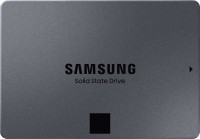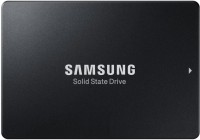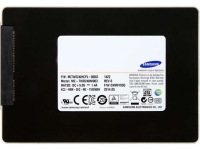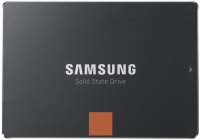SSD Samsung series QVO (low-cost QLC)
prices on 2 modelsSamsung QVO (3D QLC)
The main difference from the EVO series is the use of advanced 3D QLC NAND memory, which can store one third more information in one cell than traditional TLC NAND memory. Thanks to this, Samsung managed to expand the maximum available storage capacity of the drive, while not hitting the data transfer speed in any way. For example, this is almost the only consumer line in which you can find an 8 TB solid state drive.
 |
Typically, such products live in the server segment and are quite expensive. The abundance of various work improvers is another reason to remember server SSDs. One of the most important features of Samsung QVO drives is support for Intelligent TurboWrite combined buffer technology. To simplify, this thing combines a DRAM cache for working with small-block data with a dynamic SLC cache, which speeds up the write process. For example, in the simplest Samsung 870 QVO model with a capacity of 1 TB, the cache array reaches 42 GB.
You will have to try hard to fill this array and reduce the write speed. The QVO series also supports wear leveling, advanced hardware error correction, SMART monitoring, flexible power management, and the TRIM command. Linear read and write speeds are limited by the capabilities of the SATA 3 bus and do not exceed 550 – 560 MB. But they have excellent IOPS, which means the drive is quick when working with small files.









